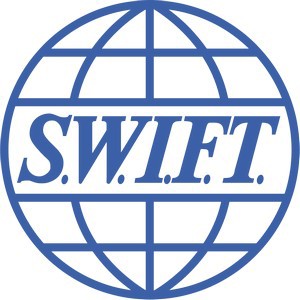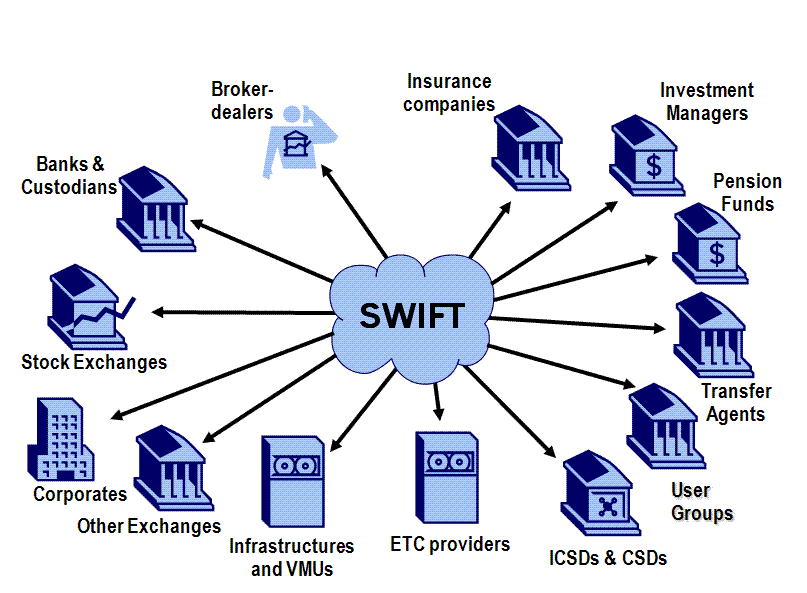SWIFT Translation System Overview

What is SWIFT and how did it come about?
The abbreviation SWIFT stands for Society for Worldwide Interbank Financial Telecommunications. In translation, this means the Community of Worldwide Interbank Financial Telecommunications, the main purpose of which is to transfer information and make payments in an international format.
The prerequisites for the creation of the SWIFT system were noticed in the early 50s of the 20th century, when, several years after the Second World War, states began to engage in active trade at the international level. As a result, this entailed a sharp increase in banking functions and operations. Previously, communication between banks was accomplished through mail and telegraph, but new conditions dictated new rules — such methods of transmitting information became ineffective due to the rapid increase in the volume of banking operations. Moreover, very often misunderstandings and mistakes began to arise during interbank transactions related to the systems of functioning of various banks and the lack of the necessary standardization. Bankers understood that sooner or later a new method of paper exchange of financial information between all banks in the world would arise. And they were right ...
The development of such a system began in the early sixties. Representatives of the sixty largest European and American banks gathered several times to discuss the most pressing problem - the creation of a unified standardization system in the banking sector. For this purpose, it was decided to use precision computing equipment - computers, which, as we know, provided the most efficient data transfer system of this kind.
The immediate work on this system, which is able to exchange financial information with high protection and under control around the clock, began in early 1968. Already in 1972 the creators prepared an official project and made the necessary calculations for the profitability of this system.
')
In May 1973, with the participation of 239 banks located in 15 countries of the world, a payment system called SWIFT was established and established. Its developers worked for more than four years for the practical implementation of this institution, and on May 9, 1977, the international network responsible for data transmission was officially launched. At the end of the same year, the number of banks wishing to join SWIFT increased to 586. Every day the community transmitted 450 thousand electronic messages.
Today, SWIFT includes more than 7 thousand financial organizations and banks, which are located in 190 countries. Despite the relatively large distance from each other (sometimes there is a need to transfer information from the United States to Australia), they can freely exchange messages and interact around the clock.
SWIFT work pattern

There are two types of messages: financial (transferred between users of the system) and system (transmitted between users and the system).
All SWIFT messages include:
- headline
- Message text
- trailer
Through the use of a computer terminal (CBT), it becomes possible to communicate with a universal computer, transmit and receive messages, and manage application tasks. All messages are stored in the regional processor (RPG), and then sent for processing to the next operations center. There SWIFT deals with their processing:
- checks syntax
- creates new headers and converts messages to outgoing form
- adds trailers
- copies and encrypts messages for storage
The verification field the sender instantly receives a notification: a positive result is an ACK, a negative result is a NAK. Each message is automatically assigned an incoming number.
Advantages and disadvantages of SWIFT
Today, in Russia, SWIFT is inferior in popularity to such well-known transfer systems, such as Western Union or Unistream, however, to pay for foreign services or transfer large amounts of money to another country is, in fact, the most rational solution who has the constant need to send considerable money transfers abroad).
The incredible scale of SWIFT distribution in the world allows for the transfer to a client account of any well-known bank, while the amount is limited only by permissible values that do not violate the economic laws of a particular state.
SWIFT transfers send funds not to the recipient's full name, but to certain accounts, while you always have the opportunity to choose the transfer currency yourself. Also, the system is the most confidential and secure. When transferring money through SWIFT, the commission is always a certain (fixed!) Amount that will increase in the minimum proportion of the amount of transfers, which will be beneficial when transferring large sums of money abroad.
So, the main advantages of SWIFT are:
- high speed delivery of transfers. The average delivery time to anywhere in the world is approximately 15 minutes for regular and 2 minutes for urgent messages;
- no restrictions on the amount of payment;
- a wide choice of currencies with which SWIFT operates;
- low tariffs (they are really much lower than in other systems);
- widespread and popular in the world, which allows payments to almost all countries;
- guarantees timely delivery of the translation. SWIFT will cover the losses incurred by customers in case the delivery deadlines due to the fault of the system are violated.
The disadvantage is quite a long time for processing payments - approximately 5 banking days. Also, when choosing such a transfer, be sure to keep in mind that even though the system itself has a more or less fixed commission, the main costs will come out when you receive money from a bank and an interbank transfer.
Moreover, the system depends on the development of correspondent banking relationships through which you transfer (after all, a single money transfer to SWIFT can be carried out by several financial organizations or banks). In addition, the cost of transfer may increase the availability of intermediary banks, which arise when the transfer currency differs from the national currency of the state in which the transfer is made.
So, the main disadvantages of SWIFT are:
- the obligatory need to provide a sufficiently large package of documents to the bank;
- control (from 2011) on this system of the US State Department, which monitors all payments;
- the inability to become a member of the SWIFT system of small and medium-sized banks (due to a rather impressive entrance fee).
What is a SWIFT code and where is it used?
The SWIFT code refers to the unique identification code of a particular bank or any other participant in financial settlements used in transferring funds from one state to another between banks (which are participants in the SWIFT system). The code is formed according to the following standard: ISO 9362 (ISO 9362 - BIC).
SWIFT codes of banks can usually be found on the website of the bank itself (section “details” or “transfers”). You can also use special directories of SWIFT codes of banks.
It should be noted that this code is used only in the global market. To conduct intra-national banking transactions, other codes are needed. The identification system of banks in the Russian Federation is called "BIK". In the UK, for example, this is the “Sort Code”. Of course, you can list such systems all over the world, but it will be much easier to use the relevant directories.
Do not forget that participation in the SWIFT identification system is entirely voluntary, so the lack of connection to it will only mean a slowdown in the process of international banking operations. Also, the SWIFT code guarantees the complete security of a transfer, so the risk that the transfer will be lost between banks is minimized.
Source: https://habr.com/ru/post/376185/
All Articles